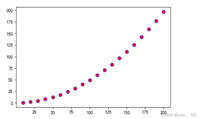python 提供了将一个或多个字符串连接在一起的多种方法。由于 python 字符串是不可变的,因此字符串连接后总是会产生一个新字符串。
简单方法连接字符串
要连接两个或多个字符串,只需要将它们彼此相邻放置即可。
s = 'hello' 'world' print(s) # 输出:helloworld
请注意,这种方式不适用于字符串变量。
使用“+”运算符连接字符串
将多个字符串连接成一个字符串的直接方法是使用“+”运算符。
s ='hello' + 'world' print(s)
“+”运算符适用于字符串和字符串变量。
s1 = 'hello' s2 = s1 + 'world' print(s2)
使用“+=”运算符连接字符串
与“+”运算符类似,可以使用“+=”运算符将多个字符串连接成一个。
s = 'hello' s += 'world' print(s)
使用 join() 方法连接字符串
join() 方法允许将字符串列表连接成一个字符串:
s1 = 'hello' s2 = 'world' s3 = ''.join([s1, s2]) print(s3)
join() 方法还允许在连接字符串时指定分隔符。
s1 = 'hello' s2 = 'world' s3 = ' '.join([s1, s2]) print(s3) # 输出:hello world
在此示例中,使用 join() 方法连接由空格分隔的字符串。
下面的示例使用该方法由逗号分隔字符串。
s1, s2, s3 = 'python', 'hello', 'world' s = ','.join([s1, s2, s3]) print(s) # 输出:python,hello,world
使用 % 连接字符串
string 对象具有内置的 % 运算符,可用于设置字符串的格式,可以使用它来连接字符串。
s1, s2, s3 = 'python', 'hello', 'world' s = '%s %s %s' % (s1, s2, s3) print(s)# 输出:python hello world
使用 format() 方法连接字符串
可以使用 format() 方法将多个字符串连接成一个字符串。
s1, s2, s3 = 'python', 'hello', 'world'
s = '{} {} {}'.format(s1, s2, s3)
print(s)
使用 f-strings 连接字符串
python 3.6 引入了 f-strings,允许以更简洁、更优雅的方式格式化字符串。可以使用 f-strings 将多个字符串连接成一个字符串。
s1, s2, s3 = 'python', 'hello', 'world'
s = f'{s1} {s2} {s3}'
print(s)
哪种字符串连接方法更简便?尽管在 python 中有多种方法可以连接字符串,但建议使用 join() 方法、“+”运算符和 f-strings 来连接字符串。
到此这篇关于python中连接字符串的7种方法的文章就介绍到这了,更多相关python 连接字符串内容请搜索代码网以前的文章或继续浏览下面的相关文章希望大家以后多多支持代码网!





发表评论